Ever wonder how an artist can smoothly draw from their imagination when you can barely recall what an apple looks like when you try to draw it? The answer is: they have developed good, if not great, muscle memory.
In this article, I will show you how you can do that as well, so you can draw from your imagination just like your favorite artists.
I am going to cover the following points:
- What is muscle memory?
- How does the concept of muscle memory work?
- How to build your muscle memory to draw from imagination?
- Warming up
- Drawing from a reference
- Simplifying subjects (make them easier to store in your muscle memory)
- Going from macro to micro
- Getting a sense of proportion
- Honing your art
- Adding details
What is muscle memory?
To put it simply to you, if you didn’t know, muscles have a memory. It’s a procedural memory that records movements just like workouts or any moves you practice often, drawing included.
Muscle memory is a great memory because it only takes a short time (3-5 minutes) of daily repetition to record and store the movements. That means you’ll be mastering drawing from imagination only through a little daily effort. That sounds like a great deal to me 😉
How does the concept of muscle memory work?
I know in my articles, I focus more on the spiritual and mental aspects of drawing or making art. However, we all know that the act of drawing, painting, or creating, in general, is a physical act. You are basically moving your hands (which have muscles) to make marks, draw lines, mix colors, etc.
I remember working out for the first time, it was really hard, I had no idea how to do the movements, and my body was like Umm what are we doing? But the more I did those exercises, the more my body started getting used to them, and every time I train, I’d notice that I shouldn’t arch my back here and should stand this way until I progressively internalized these movements and started somehow intuitively doing them.
This is exactly what muscle memory is about even for art, the first drawing is like that first workout. The more your draw afterward, the more your muscles will store the info from that and give it back to you when you need it again. Keep in mind that no one is born knowing how to draw people and landscapes, even children see these shapes and characters on TV or other entertainment forms and draw just a random circle and some lines, then start developing that as time goes by.
How to build your muscle memory to draw from imagination?
Repetition is key! But before I tell you what you should be repeating, I want you to know that nothing comes from comfort. If you want to learn how to draw from memory or imagination, you need to feel challenged. If your practices are too easy, you’re not getting better.
We now move to choose one main subject that we want to really improve and draw completely from imagination. To some people it will be human figures and portraits, to others, it might be basic shapes for abstract styles. What matters is your focus on one subject at a time.
1- Warming up
To start building muscle memory, the first thing you need is a good warm-up. Once your hands feel ready to start creating, your next step is to draw from a reference.
2- Drawing from a reference
Choose something that is challenging for you! I rarely draw trees, I’m not very familiar with it as a subject for my drawings, so I would choose a tree for this practice. Let’s find references to pine trees.
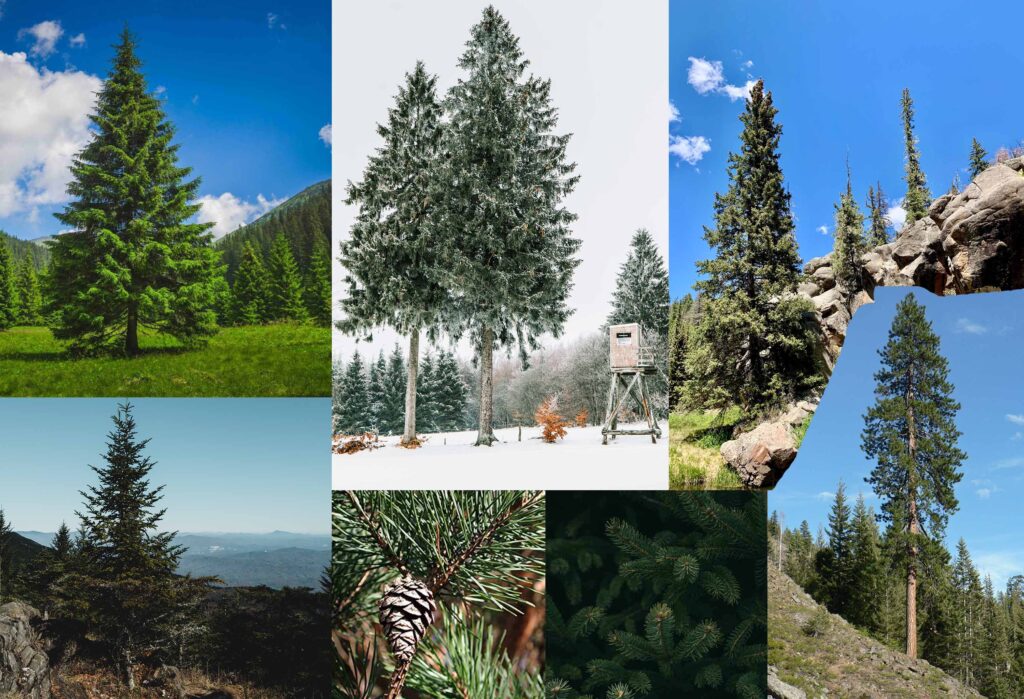
I gathered many references because things in nature exist in different forms and shapes depending on the season, the area where they grow and so much more. What I want to draw is a representation of a pine tree that when I put it in my artwork, the viewer will instantly know that it is a pine tree. For that, you will have to understand your subject really well so you can move to the next step, which is to simplify the subject and recreate it.
3- Simplifying the studied subject
When you’re studying objects to simplify them, always go from macro to micro. Think in larger shapes.
If I am to apply my own advice here, I am looking at all the previous references, and I can tell that the closest basic shape to a pine tree is a cone, with a trunk that looks like a thin tube slightly wider at the bottom. And that’s our first information to store. If you are losing track easily, write that down in your sketchbook. Keep notes from your work and refer to them whenever in need. Stop treating sketchbooks like some precious property!
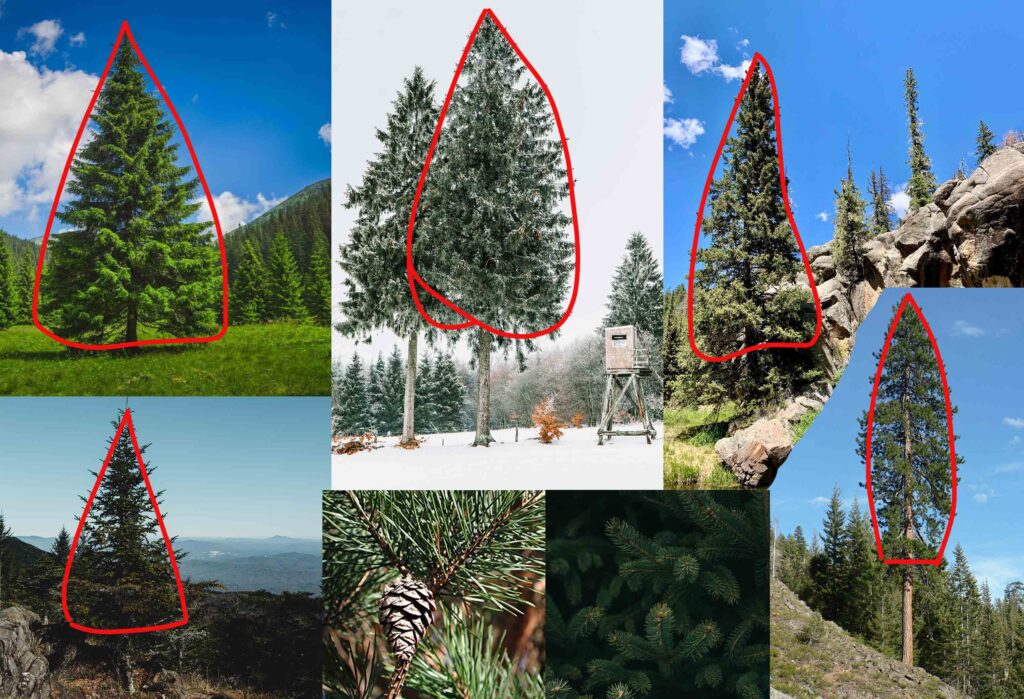
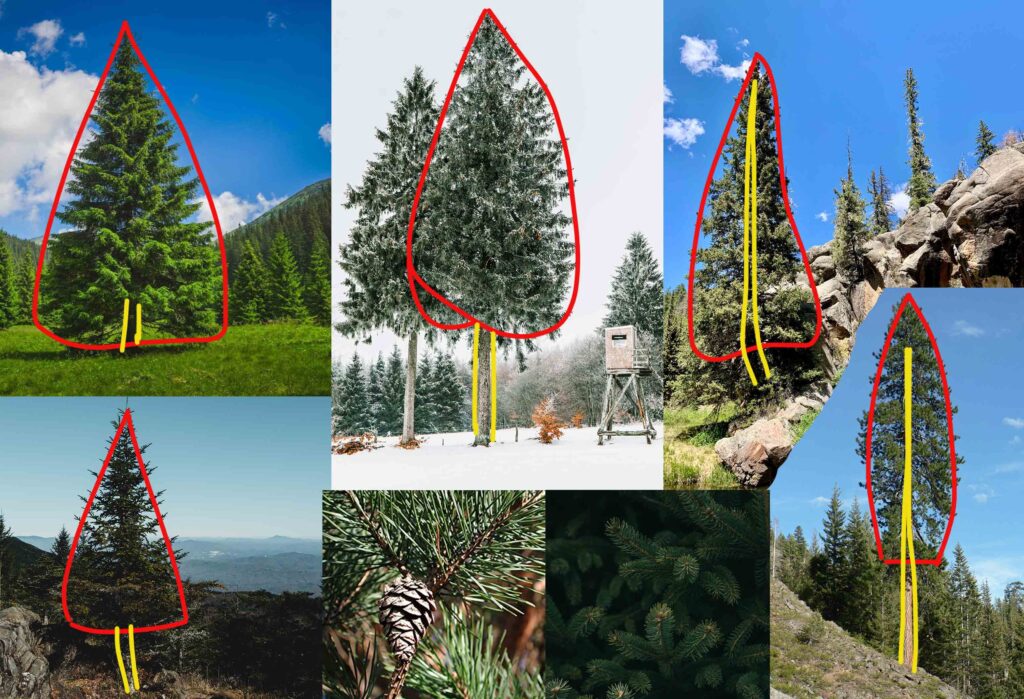
4- Get a sense of proportions
Proportions will of course depend and might differ every time, but for this exercise, you want to take two, or three references that would serve as your standard idea of what a pine tree is. Let’s do that.
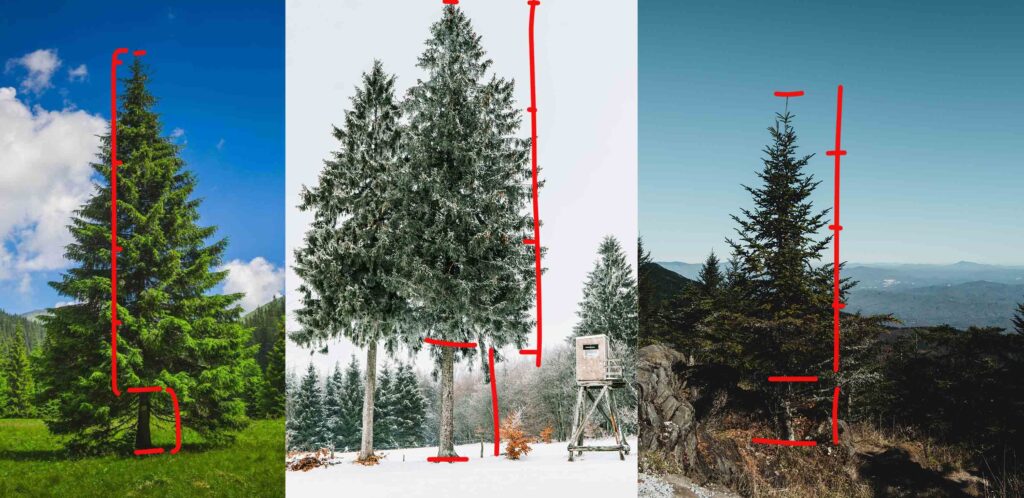
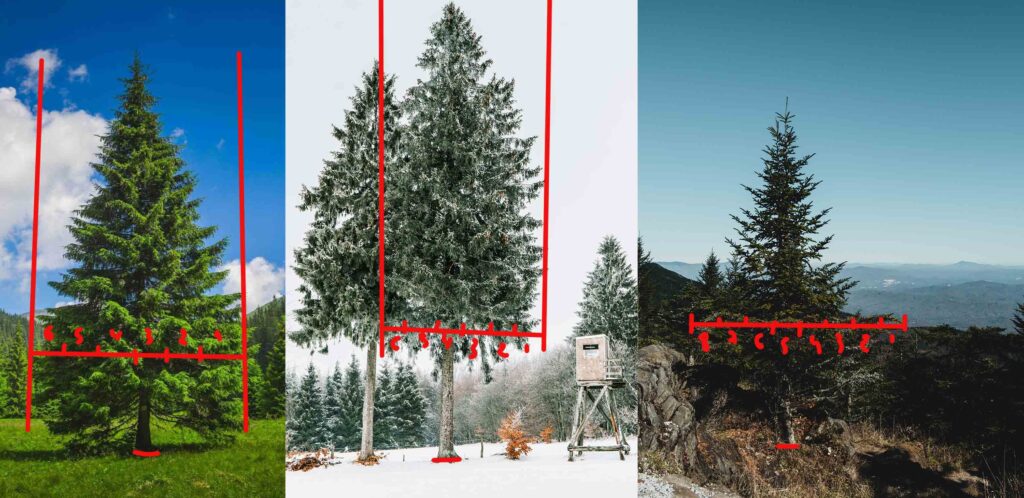
Analyzing those three references gives us the second information to store. And that is, the top or leaf part of a pine tree is about 3 or 4 times the size of the naked trank in length and about 6 times the width size.
With the set of info I have gathered so far from my references, I am able to start sketching a pine tree from my imagination.
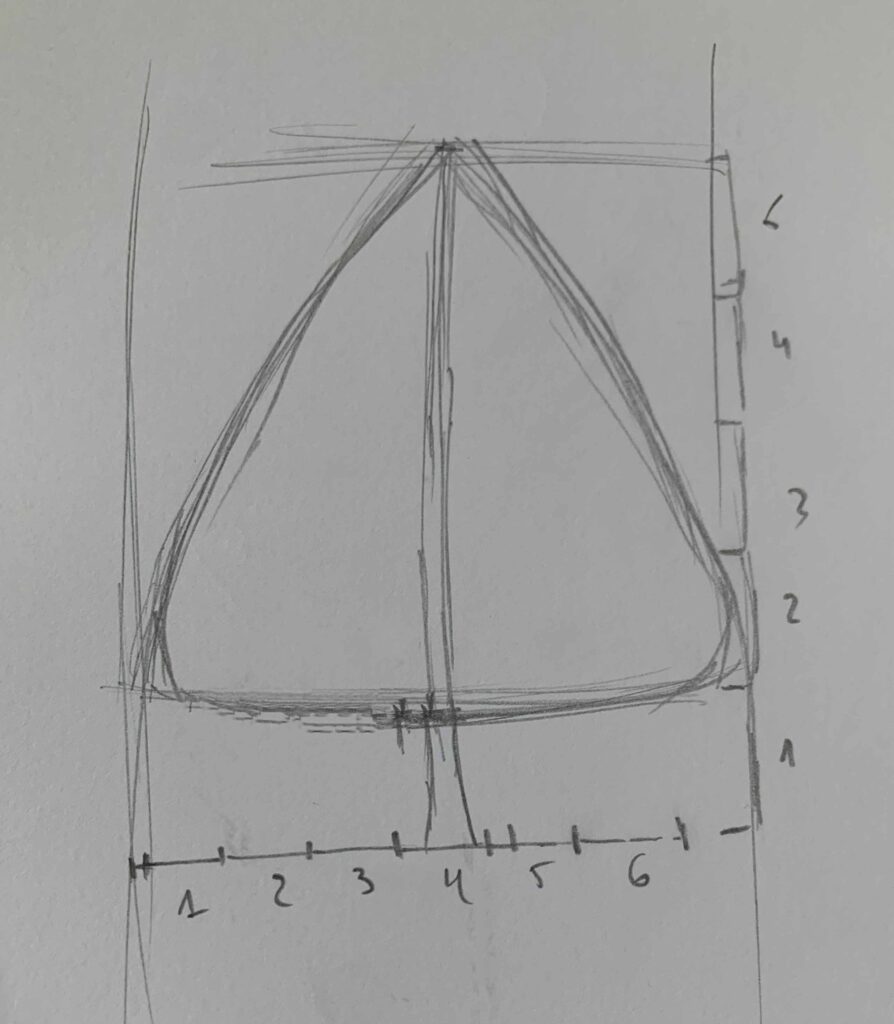
5- Go back to your reference for more info
Let’s see the additions that will make our sketch look more like the references we used.
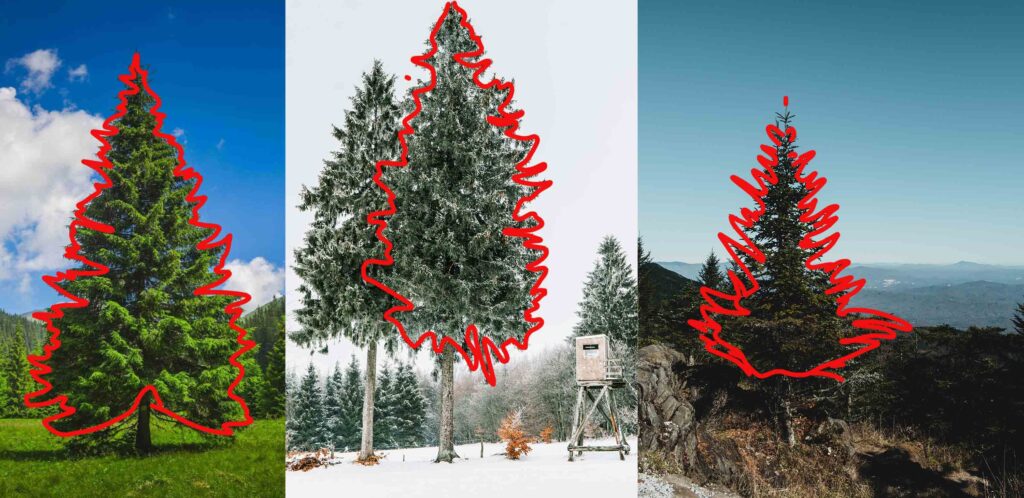
The outline of the pine tree looks like a zigzag line that follows the cone shape alternating between facing up and down.
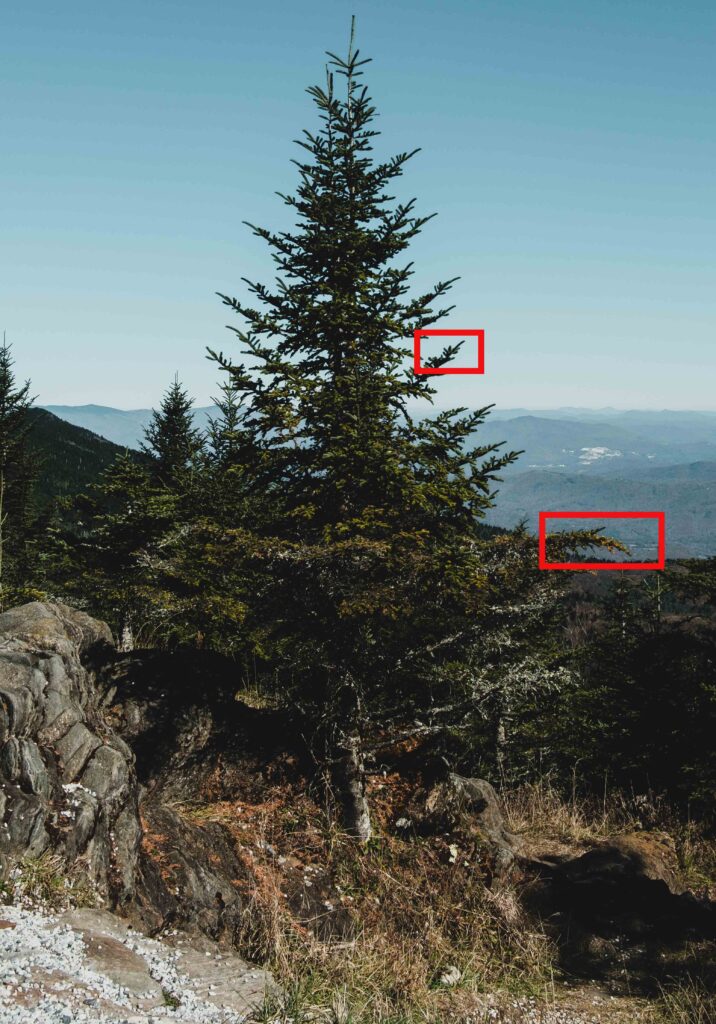
Let’s add this new information to our sketch.
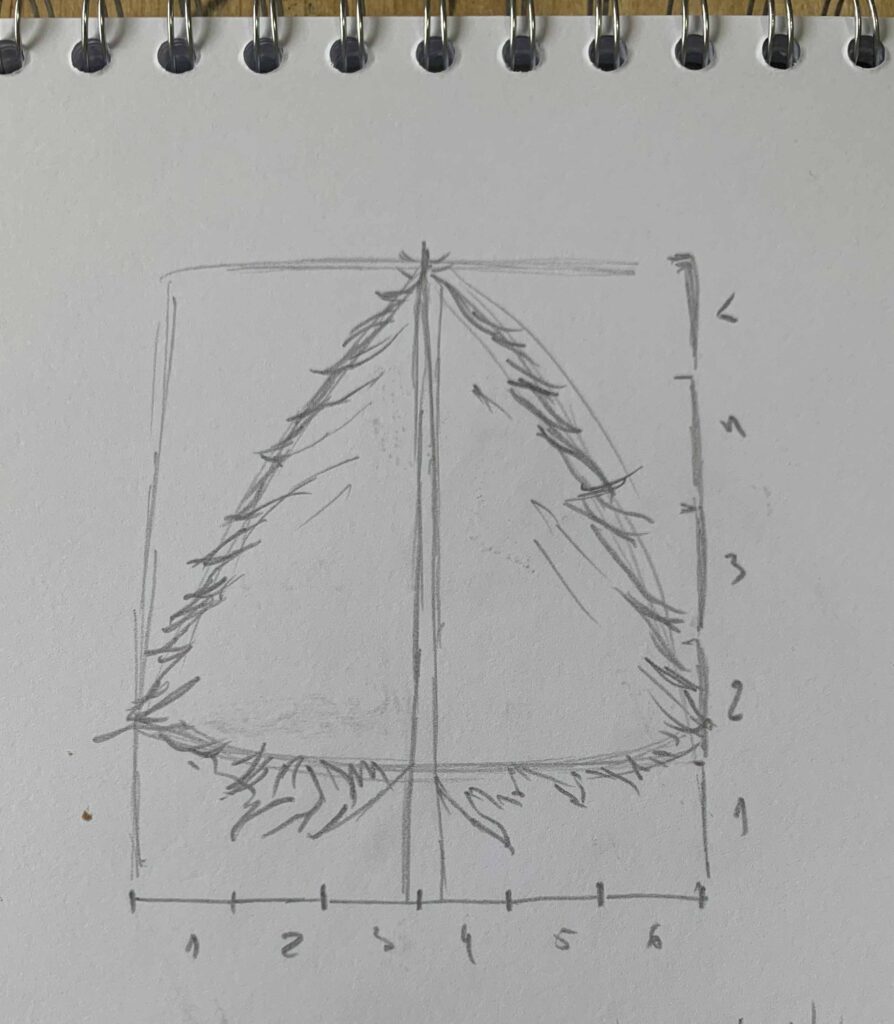
When I look at this sketch, I can already tell that it is a pine tree. So I have internalized the simplified version of what a pine tree looks like. It’s a cone-shaped top with a slimmer trank that looks like a tube going slightly wider at the very bottom. The top is about 5 times the trunk length, and about 6 times the width of the trunk at the very bottom.
6- Feel free to study the details
I personally don’t care about copying or recreating the exact same replica of the references I use, so I usually store the overall macro information of the subjects I like to paint unless the details really matter like facial expressions and other significant details. But if you want to take this practice further and study the subject fully in-depth, I would recommend you go ahead and analyze more elements of this tree separately in depth as follows:
The trunk of a pine tree
Study the pattern on the trunk of the pine tree and add a similar one to your sketch, it should just look similar not the same. Remember, this practice is not for mastering drawing from references, this is about drawing from your imagination. You are basically gathering simplified information for your mind and muscles to store for next time.
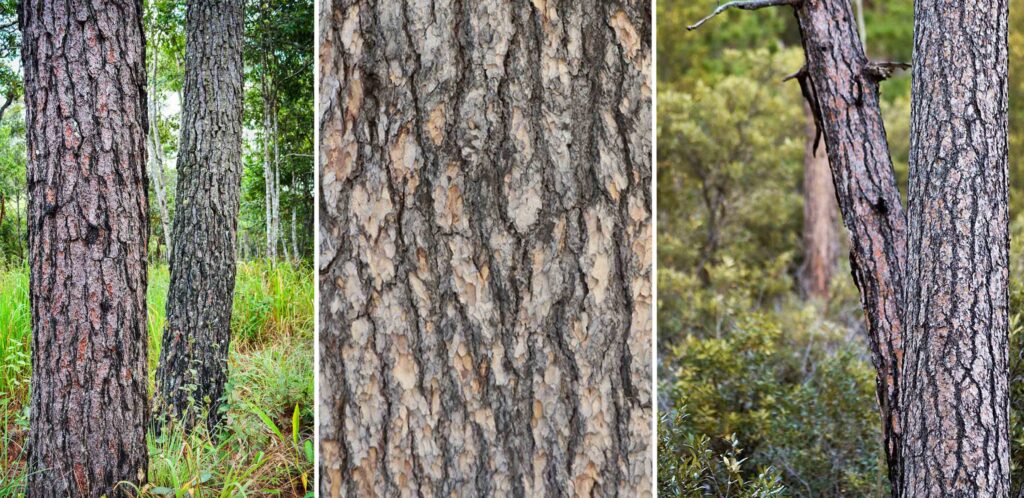
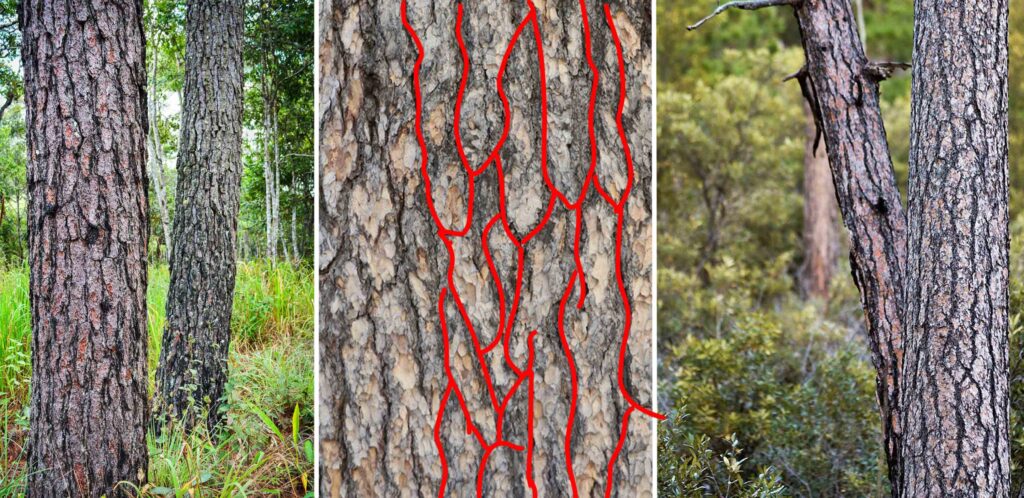
The leaves of a pine tree
Move to your next detail, which will be, in our case, the leaves of a pine tree. Studying them, they look like needles that come together in groups to form a tube-like shape with a rounded top. Again, practice this detail so you can add it to your pine tree sketch.
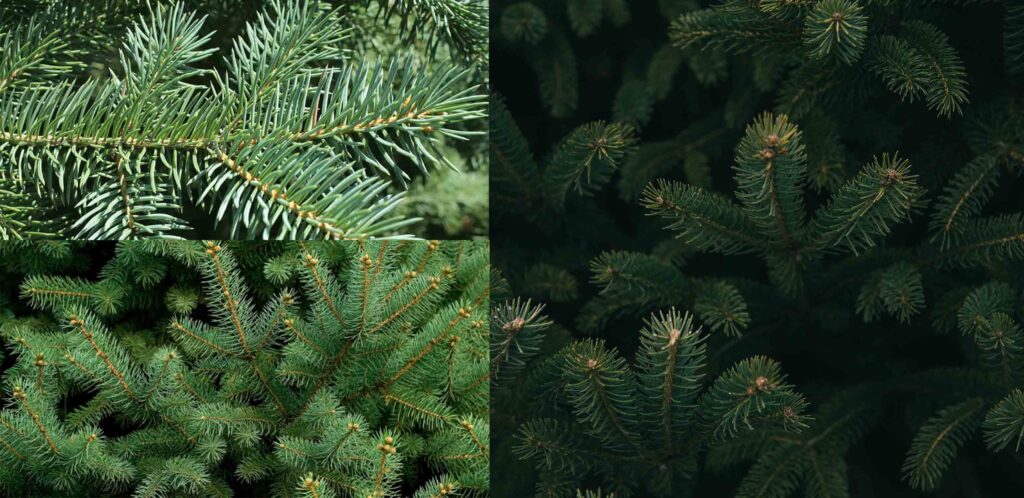
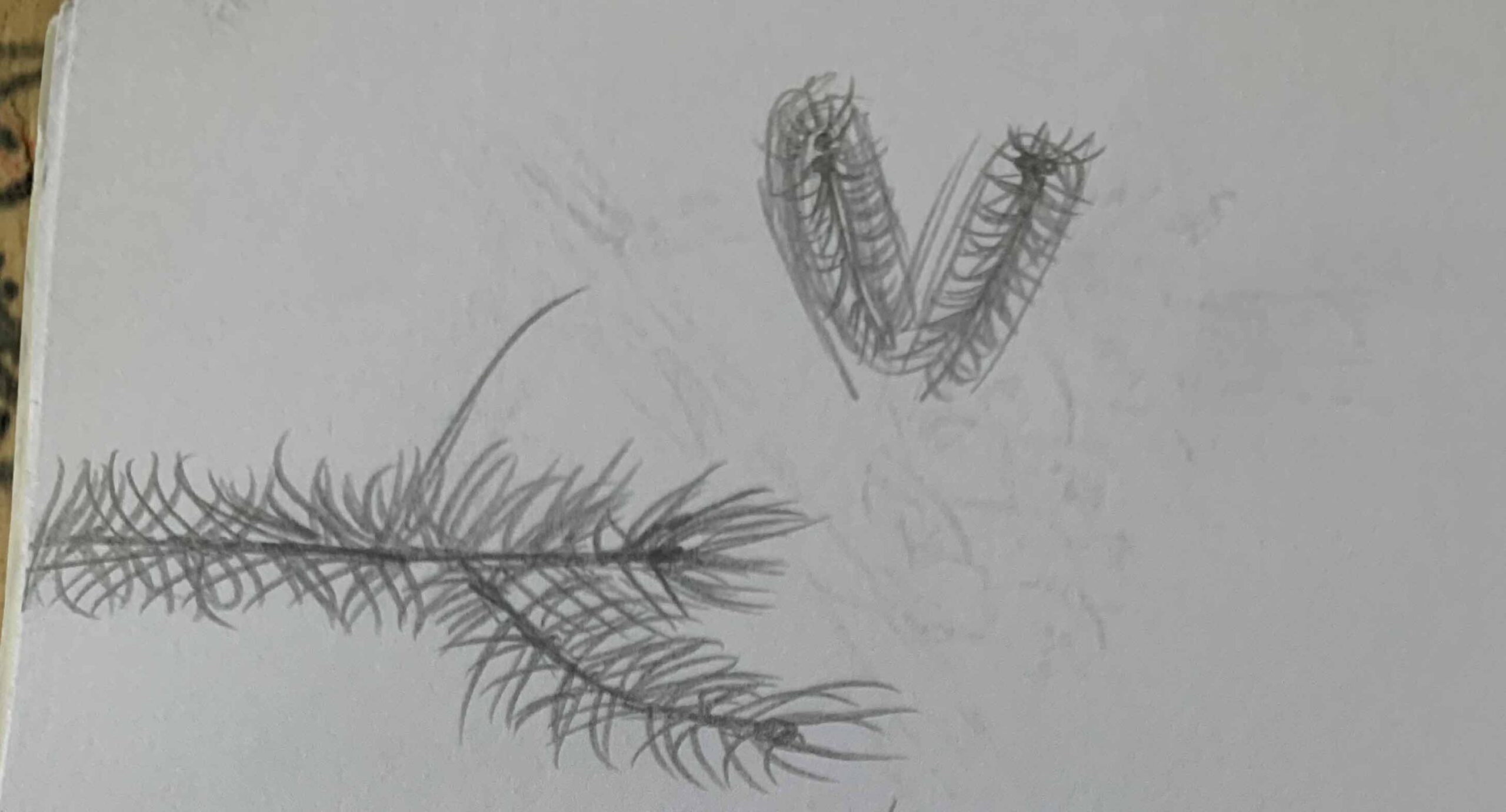
Your last addition will be the pine cones
If you are drawing a close-up of the pine tree, this will be a detail that you need to pay high attention to. Because pine cones will give your drawing the identity of being a pine tree drawing. But if you are drawing your pine tree from afar, the pine cones shouldn’t be very noticeable, otherwise, you are ruining your sense of proportion and scale. Keep these little things in mind for an ideal representation of your desired subject recreation.
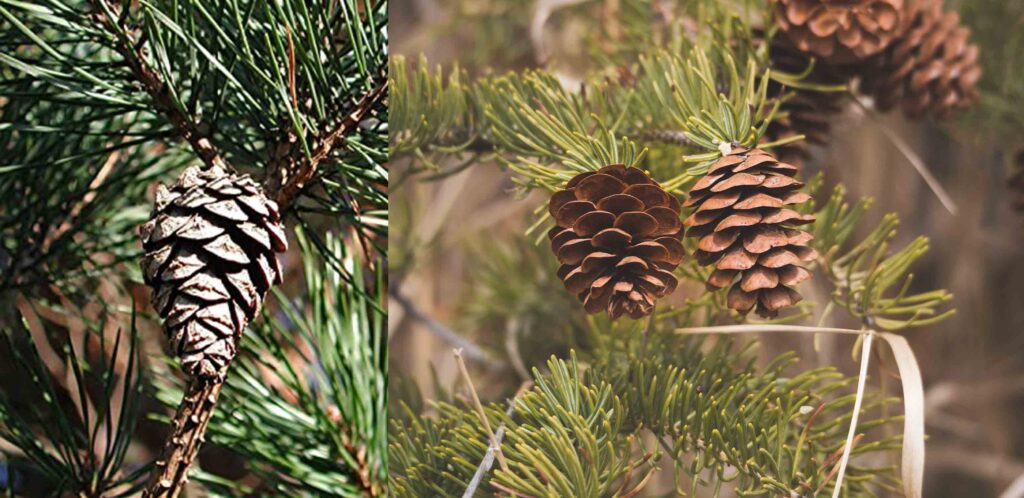
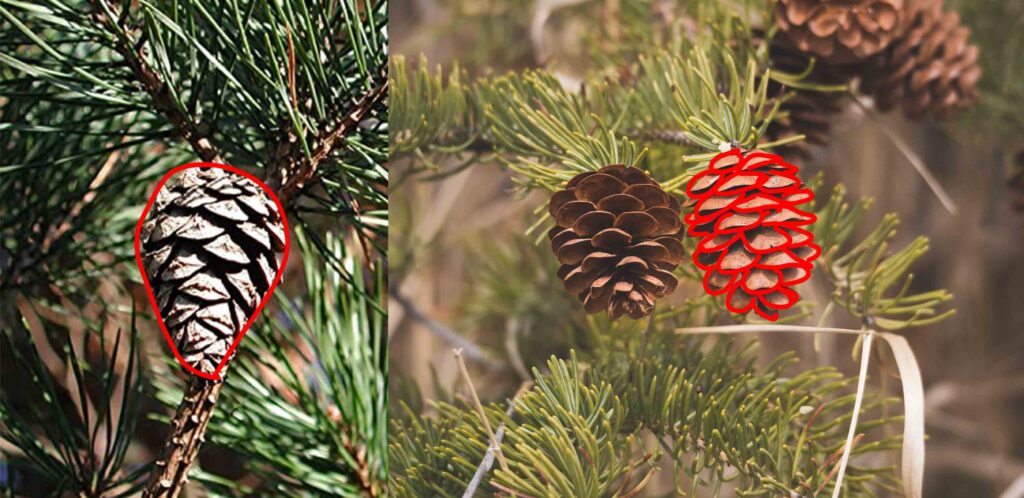
Following the exact same method, you study the overall shape, cut it down to a more accurate group of shapes, then progress with adding your information as details back into your initial sketch.
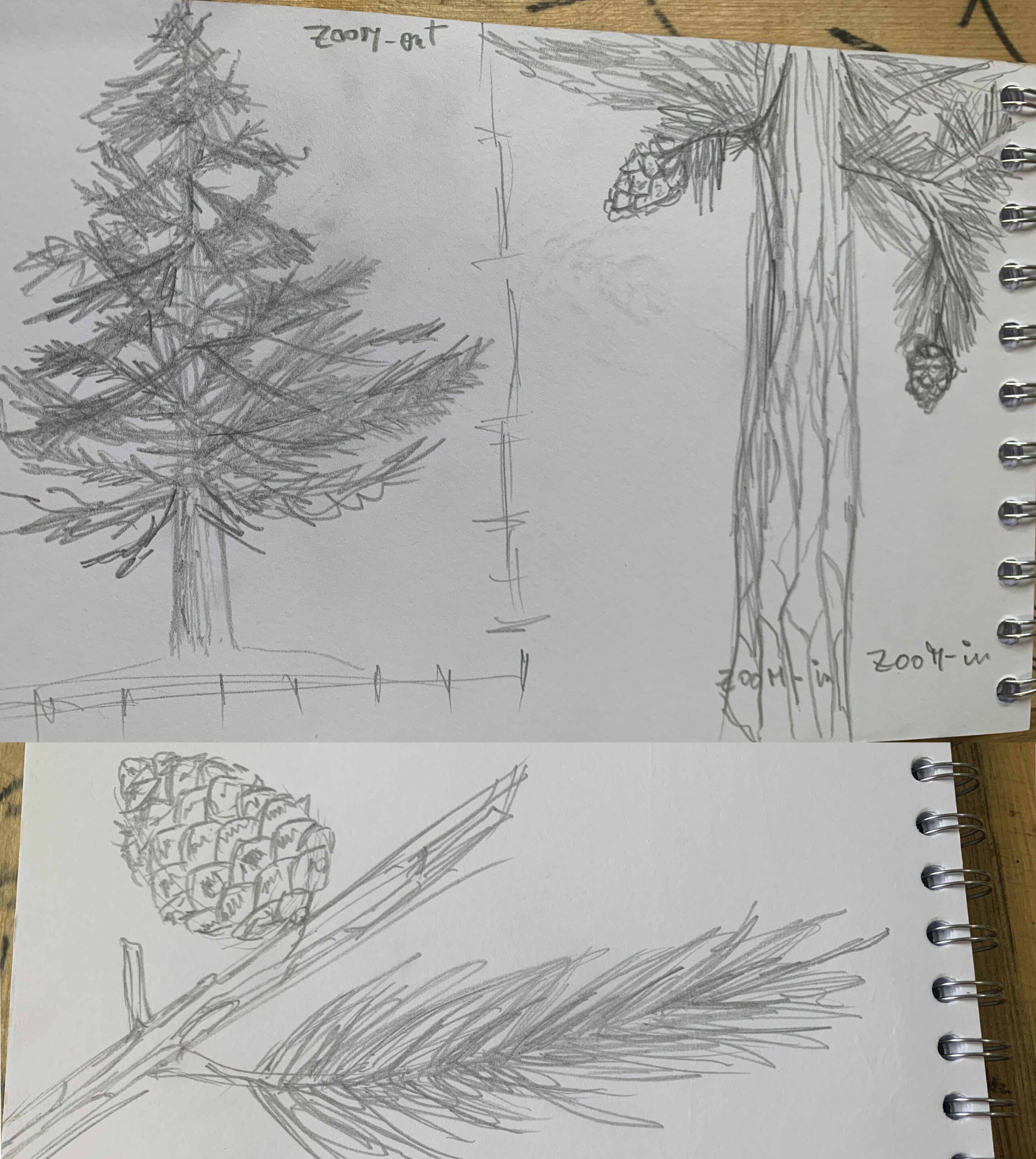
Conclusion
By following this process of creation, you are building a great muscle memory that will allow you to recall pieces of information to follow when you need to draw a certain subject from your imagination. This process is a very mindful way of drawing and storing information in both your brain and muscles.
You can follow this exact same method to study any subject you are wanting to draw from your imagination. Make sure to always choose challenging and various subjects so you can improve and learn progressively.
Make sure you check these articles for tips that would instantly make your artworks better.
What is composition and why does it matter so much in art?
Art Standards: your go-to plan to learn more about art as a self-taught artist



I am fascinated with art, muscle memory and self-reclamation for youth traumatised by life.